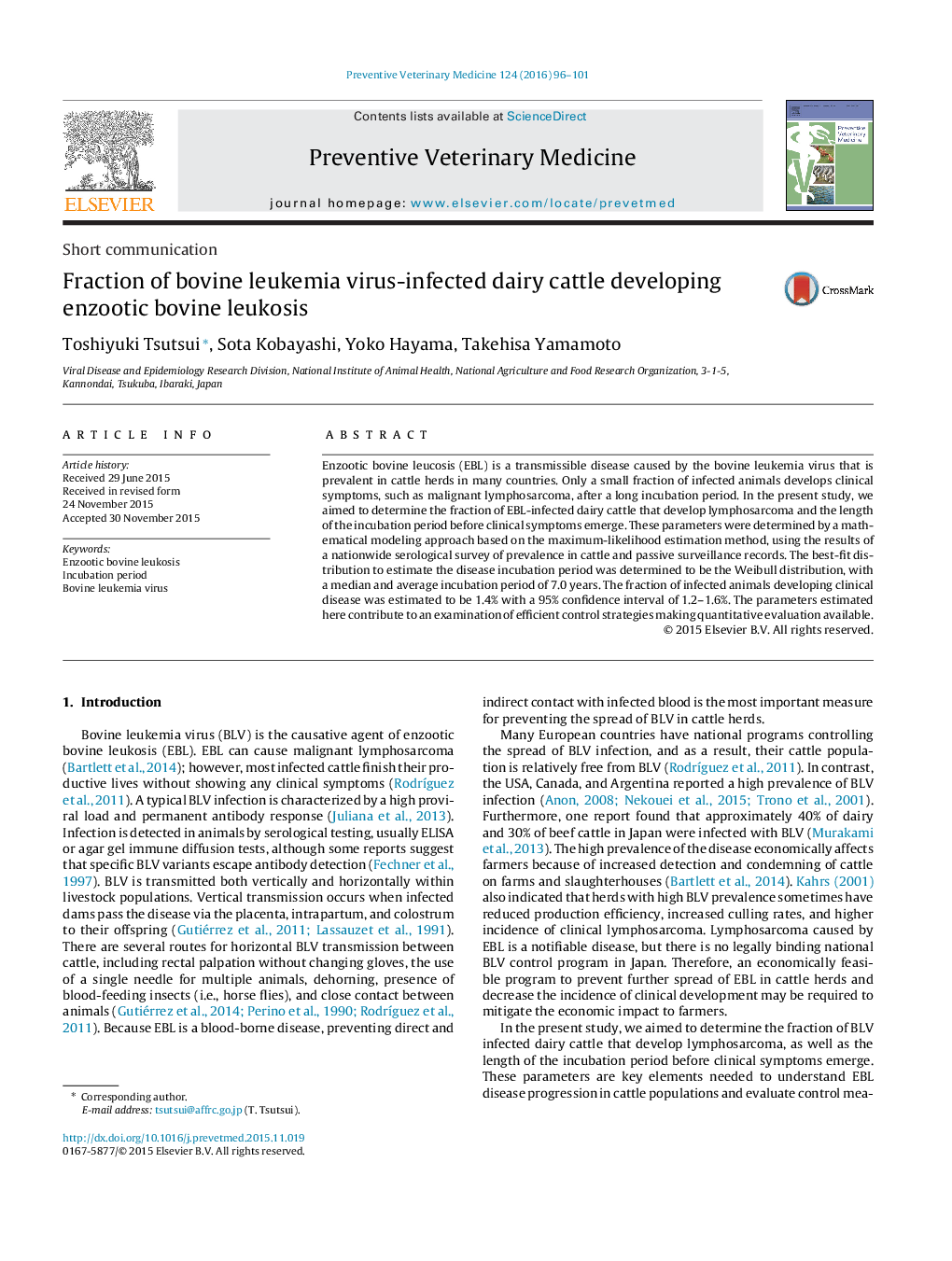| Article ID | Journal | Published Year | Pages | File Type |
|---|---|---|---|---|
| 5792985 | Preventive Veterinary Medicine | 2016 | 6 Pages |
Enzootic bovine leucosis (EBL) is a transmissible disease caused by the bovine leukemia virus that is prevalent in cattle herds in many countries. Only a small fraction of infected animals develops clinical symptoms, such as malignant lymphosarcoma, after a long incubation period. In the present study, we aimed to determine the fraction of EBL-infected dairy cattle that develop lymphosarcoma and the length of the incubation period before clinical symptoms emerge. These parameters were determined by a mathematical modeling approach based on the maximum-likelihood estimation method, using the results of a nationwide serological survey of prevalence in cattle and passive surveillance records. The best-fit distribution to estimate the disease incubation period was determined to be the Weibull distribution, with a median and average incubation period of 7.0 years. The fraction of infected animals developing clinical disease was estimated to be 1.4% with a 95% confidence interval of 1.2-1.6%. The parameters estimated here contribute to an examination of efficient control strategies making quantitative evaluation available.
